
views
In the Northern Hemisphere
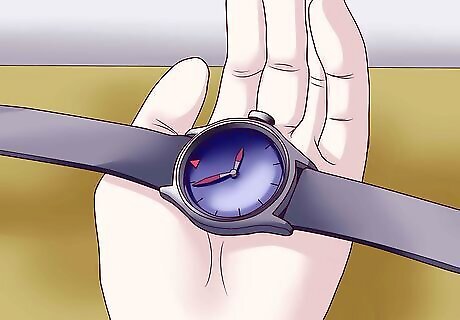
Hold the watch horizontally. This trick can be used anywhere in the Northern Hemisphere during the day, when the sun is visible. Lay the watch flat and face-up in your palm so that its face is parallel with the ground.
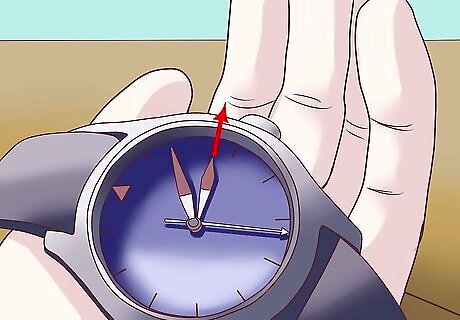
Point the hour hand in the direction of the sun. Turn the watch, your hand, or your entire body so that the hour hand of your watch is pointing directly at the sun. The time on the watch doesn't matter, as long as it's accurate. If you're having a hard time lining the hour hand up with the sun exactly, you may want to use a narrow object's shadow to help you. Stick a twig or narrow post into the ground so that the shadow it casts is clearly visible. Then, line the shadow up with the hour hand of your watch. An object's shadow is cast away from the sun, so lining your hour hand up with a narrow shadow is essentially the same as lining it up with the sun itself.
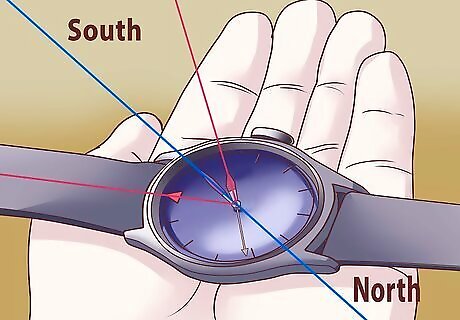
Bisect the angle between the hour hand and the 12 o'clock mark to find South. This is the tricky part. Find the middle point of the angle between your hour hand and the 12 o'clock mark on your watch. Before noon, you'll have to measure clockwise from your hour hand to the 12 o'clock marking, while afternoon, you'll have to measure counterclockwise from your hour hand to the 12 o'clock marking. The middle point between the two marks South, while the point directly across from it marks North. For example, if it's exactly 5 o'clock in the afternoon and you've lined up your hour hand with the sun, South is the direction exactly between the 2 and 3 o'clock marks and North is the spot across from this point (exactly between 8 and 9). Note that during Daylight Saving Time, your watch is most likely one hour "off" from the "real" time. If this is the case, substitute 1 o'clock for 12 o'clock before finding your North-South line.
In the Southern Hemisphere
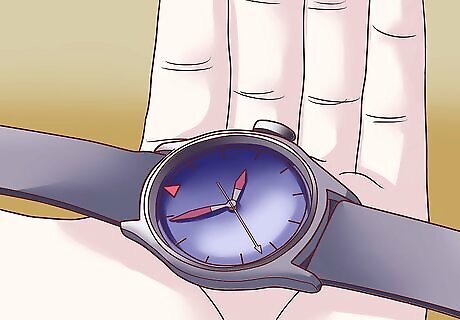
Hold the watch horizontal. As in the Northern Hemisphere, you should take off your watch and lay it flat in your hand when you're in a location where you're able to see the sun.
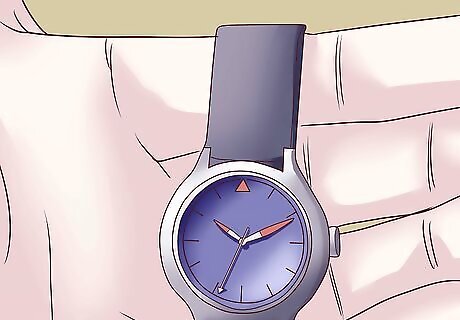
Point twelve o'clock in the direction of the sun. The key difference between the Northern and Southern Hemispheres when it comes to using a watch as a compass is that in the Southern Hemisphere, it's the 12 o'clock mark, rather than the hour hand that you must line up with the sun. Reversing the orientation of your watch relative to the sun allows you to account for the difference in the sun's orientation between the two hemispheres. If you're having a difficult time getting a bead on the sun, you can use the same shadow trick as in the Northern Hemisphere to ensure your 12 o'clock mark is precisely lined up.
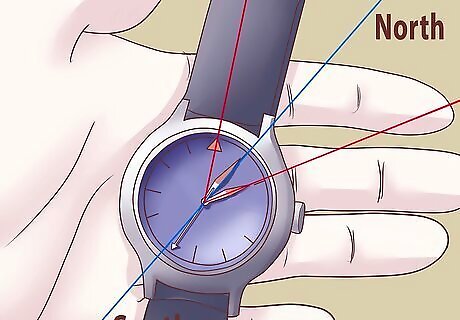
Bisect the angle between the hour hand and the twelve o'clock mark to find North. The exact middle of the angle between the 12 o'clock mark and the hour hand on your watch marks North, while the point directly across the face of the watch from it marks South. For example, if it's 9 o'clock in the morning and we line the 12 o'clock mark on our watch up with the sun, the midpoint between the 10 and 11 o'clock markings is North and the point across from this (between the 4 and 5 o'clock markings) is South. If your watch is set to Daylight Saving Time, use the 1 o'clock marking on your watch as your benchmark, rather than the 12 o'clock mark, as you would in the Northern Hemisphere.
Determining Your Hemisphere
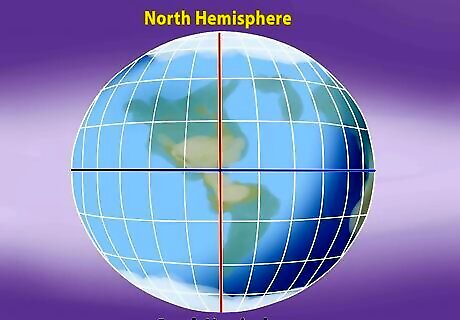
Use a map to find your hemisphere at home. The makeshift watch compass described in this article uses the position of the sun in the sky to determine North and South. Because the sun is in a different part of the sky in the Northern Hemisphere (the part of the earth north of the equator) than it is in the Southern Hemisphere (the part of the earth south of the equator), it's important to account for this difference to ensure your compass is accurate. It's usually easy to tell whether you're in the Northern or Southern Hemisphere simply by virtue of knowing what country you're in (for instance, The Southern Hemisphere includes most of South America, Sub-Saharan Africa, and Australia). If you're at home (or otherwise near civilization), use a map, a globe, or an online geographical resource to find your position relative to the equator.
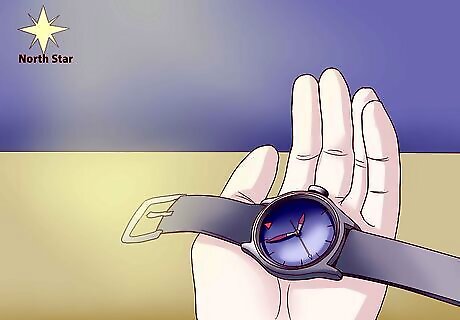
Use the North Star to find your hemisphere in the wilderness. If you're truly lost - for instance, in a life raft in the middle of the ocean, you may not have access to maps, encyclopedias, or the internet. Luckily, if you're deep in the wilderness and you don't know which hemisphere you're in, you can still determine whether you're in the Northern or Southern hemisphere by searching for Polaris, the North Star, in the night sky. This star is visible from the Northern Hemisphere, but if you're even slightly below the equator in the Southern Hemisphere, you won't be able to to see it. Note that the watch compass described in this article works best in the Autumn and Spring and can be inaccurate near the equator.




















Comments
0 comment